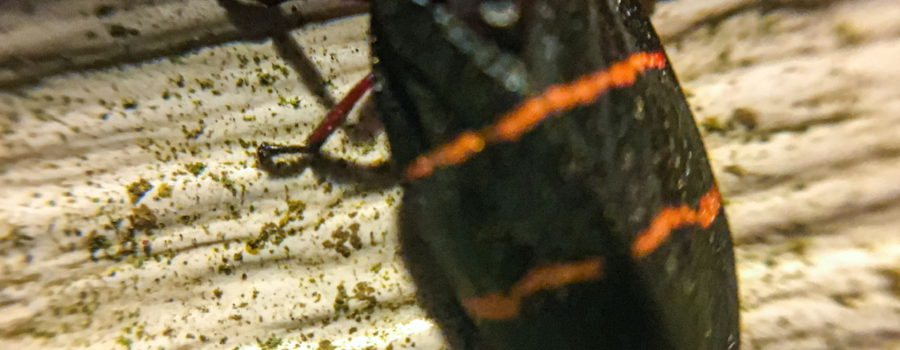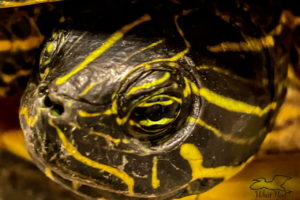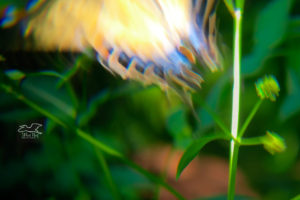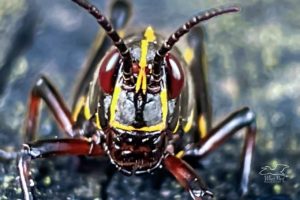The Two Lined Spittlebug; A Beautiful Adult with Gross Larvae
Gardening is not my passion. I have never had a green thumb, and at this stage of my life, I have figured that out. I have honestly never really been that interested in gardening, and that may be a factor in my brown thumb! Don’t get me wrong, I love beautiful flowers, trees, and lawns and I totally respect those folks who do have a green thumb. But if I have to nurture something, give me a puppy any day!

Every summer I have issues with patches of my lawn getting brown or even a sickly purplish color. One summer when this happened, I decided to examine the dying patch more closely. I realized that a lot of the grass stems in the area were covered in this disgusting frothy, moist foam. If you stepped on the dying spot, it felt squishy and wet underfoot. It was kind of strange and kind of gross. I took a sample of the dying grass with the nasty substance on it to my local agricultural extension office, and learned that the “spittle” (and it really does look like a wad of spit) on my grass was actually larval two lined spittlebugs. The bug larvae actually produce the soggy mess to help protect them from predators and to keep them from drying out in the summer heat. The larvae feed on the grass juices and damage the stems and leaves, eventually killing the grass.

Even though the larvae are not terribly pleasant looking little bugs, the adult two lined spittlebug is actually very attractive. They tend to be dark brown to black with two red or orange stripes that cross over the wings. When the wings are spread, the exposed abdomen section of the body is a bright red. Even though they have wings, adult spittlebugs rarely fly, but they can move quickly and do jump some pretty long distances. The adults are pretty short lived, surviving from between two weeks and two months, and they also feed on plant and grass juices. Females like to lay their eggs in the soil or in grass thatch near the plants that they feed on. For that reason, if you start noticing spittlebug damage to your lawn, dethatching is one of the best ways to control them without using insecticides.





Recent Comments